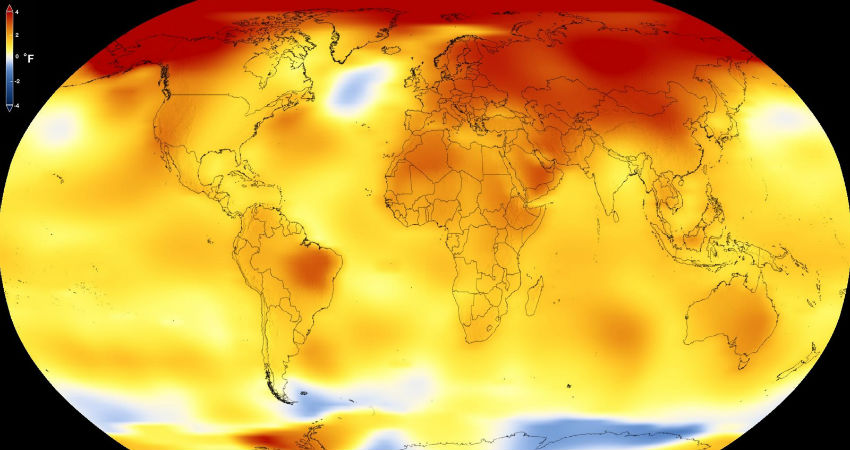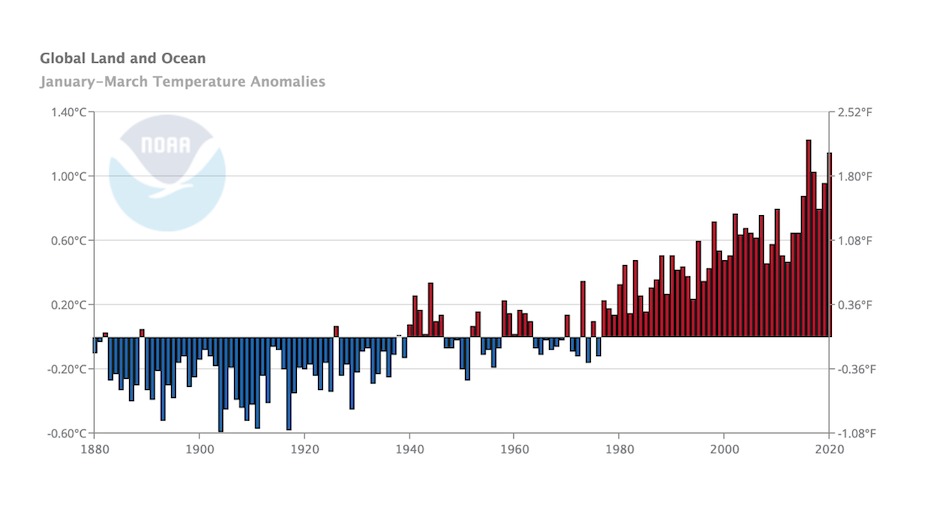
Will the year 2020 be the warmest year ever? So far, 2016 has been the warmest year on Earth. Although 2016 was an El Nino year, it seems that this year is turning out to be warmer than 2016 sans El Niño. NOAA’s National Centers for Environmental Information (NCEI) reported that last month was the second warmest March on record since 1880. The month saw average temperature just short by 0.15°C (0.27°F) than what was recorded in March 2016.
March 2020 witnessed a third-largest departure from the 20th-century average for any of the 1683 months on record.
According to the data by NASA along with NOAA and the Japan Meteorological Agency, March 2020 was the second warmest in history.
The main difference between 2020 and 2016 is that one of the strongest El Niño events on record was peaking during late 2015 and early 2016. EL Nino spreads warm water across the surface of the equatorial Pacific Ocean, which can send vast amounts of stored oceanic heat into the atmosphere. Most of the record warm spikes occurred during El Niño events, so to witness such hot March without El Niño is truly noteworthy.
Well, there are some other factors as well that may defy 2020 from becoming the hottest year on record.
There has been a substantial drop in carbon dioxide emissions due to the coronavirus shutdown but would that be enough to keep 2020 from outdoing 2016? Carbon Di Oxide emissions may drop significantly over 2019. It might even be the largest amount of drop-in any year on record. However, the effect of changes in carbon dioxide levels on the global temperature is largely seen through decades to centuries. Thus, the impact of the coronavirus shutdown on global temperature in 2020 could be comparatively minor.

Secondly, NOAA and the International Research Institute for Climate and Society are predicting a 30% probability for La Niña conditions by the Autumn. There are signs indicating the evolution of the tropical Pacific and the recent model ensembles indicate that a La Niña event may be in developing. If it happens, that would overcome the odds of 2020 ending up into a warmer year than 2016.
The latest report from BOM also states La Niña may be on the way. All of the eight global climate models predict that the Niño 3.4 region will be steadily cooling during the northern summer months.
By September, four of the eight weather models (BOM, NASA, NOAA, and UKMET) show ocean temperatures in the Niño3.4 region will be meeting the criterion for La Niña. -0.5°C is the threshold for La Niña, while the BOM’s threshold for La Niña is -0.8°C.
Thus, chances of 2020 ending up as the warmest year ever are 50-50. Let us wait and see how things turn out.


